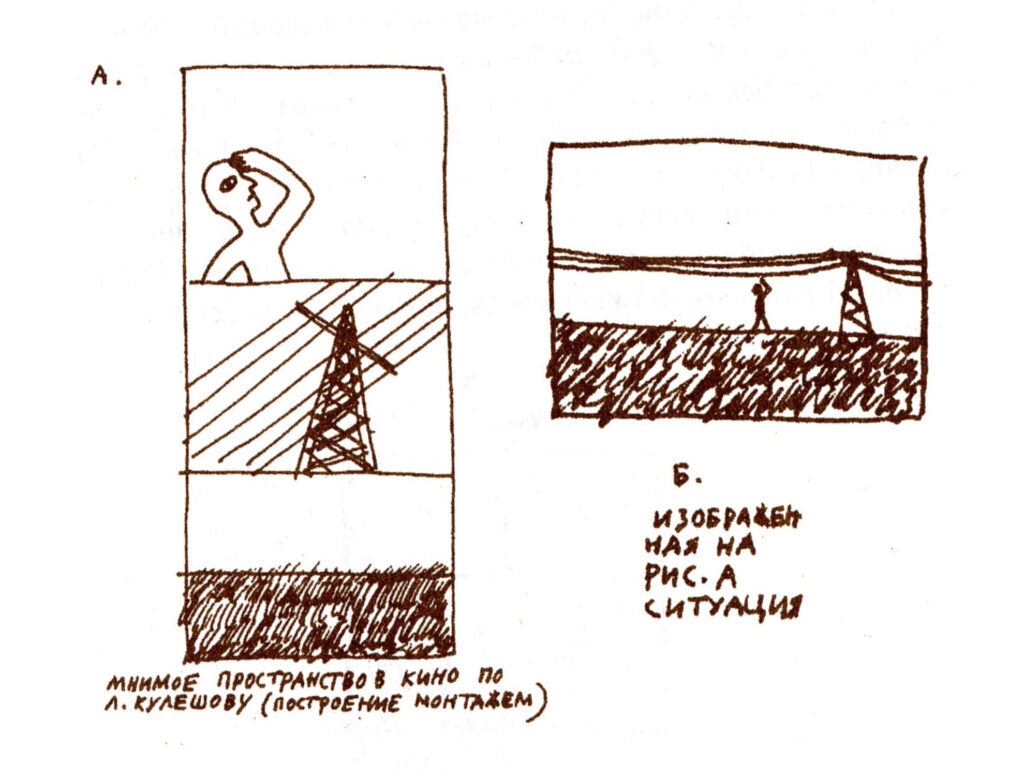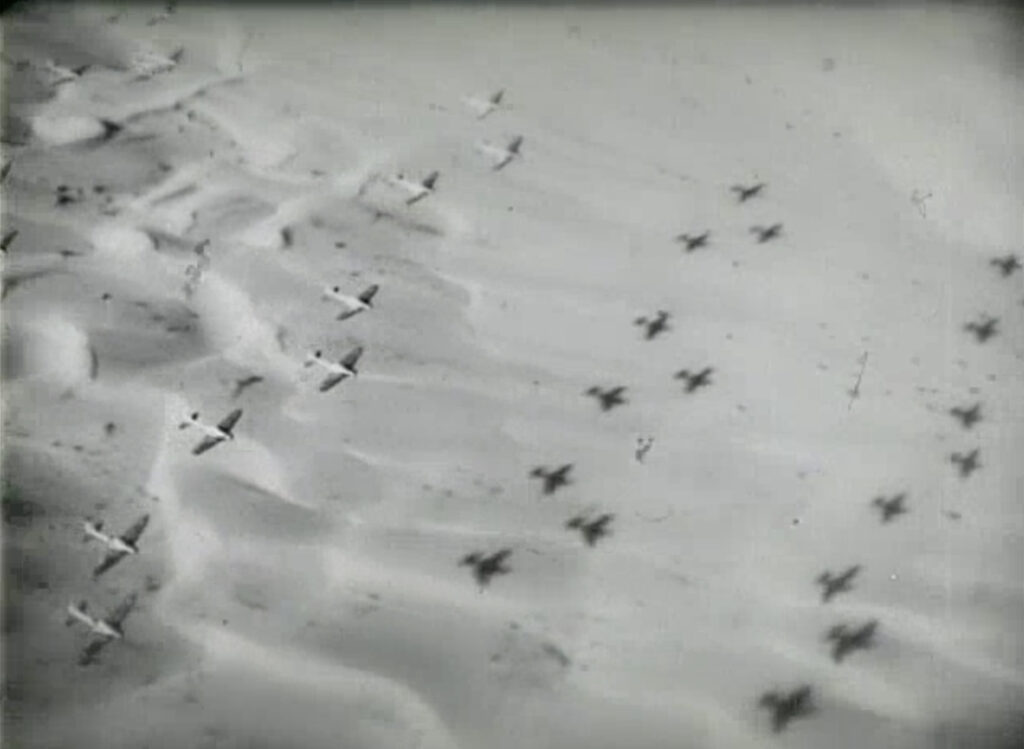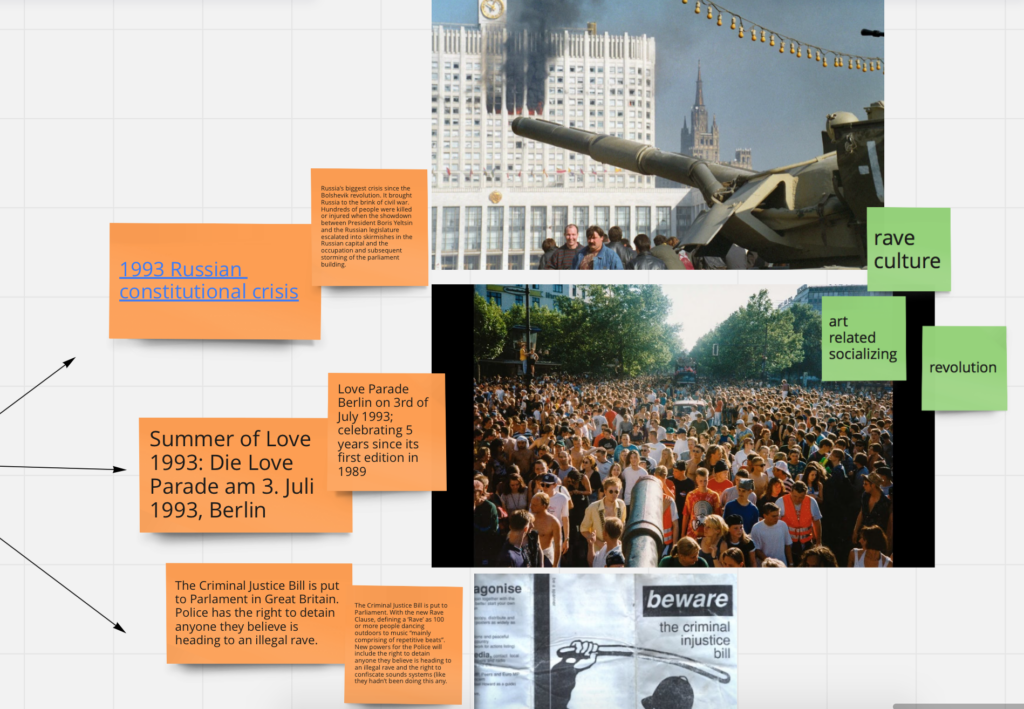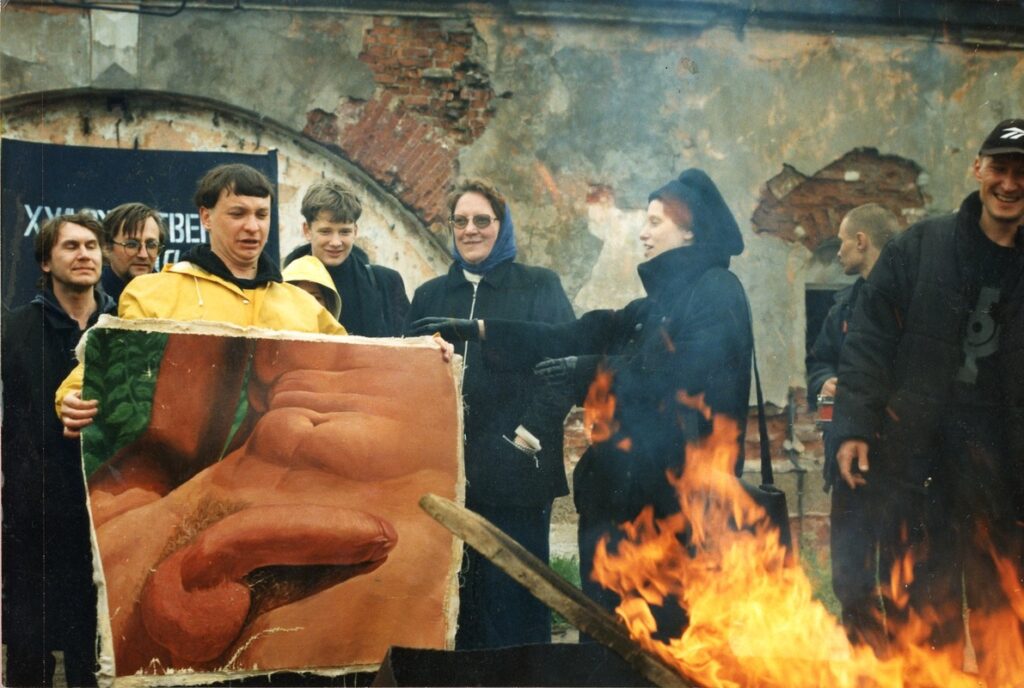A could-be manifesto for hedonistic archives
[1]Imagine these fragments are a response to a not-yet-written manifesto for a hedonistic archive. Then imagine they are a response to a manifesto which cannot be written at all and should not be either.
I. Two Anecdotes
Julian Volz
When Andrei Khlobystin began to build up an archive of the Leningrad art scene and especially of the New Artists at the Museum of Nonconformist Art at Pushkinskaya 10 at the end of the 90’s he was confronted with the problem that his artist friends where not yet really willing to leave their personal things to him. The New Artists were a generation of nonconformists, of slackers, intellectuals, punks, street fighters, musicians, designers and visual artists that were living in Squats all over the city. They were not concerned with their own historiography, but with the here and now, the ephemeral moment and thus an art that is not created for eternity.
The situation was aggravated by the fact that Khlobystin had no financiers and thus no financial resources to build up his archives. Since necessity is known to be the mother of invention, he devised a very special method to build up the foundation of his archive. He told his friends: I invite you to have some beers tonight at Pushkinskaya 10. All I ask is that you bring me the content of your trash bin. Khlobystin, the son of practising archaeologists, had already learned as a child an important principle of all people who deal with the past: In trash is treasure.
***
Marta Volkova & Slava Shevelenko were part of the non-conformist art scene of Leningrad in the 80’s. They migrated to the Netherlands after the fall of the Soviet Union. When the art centre Marres in Mastricht commissioned them in 2009 to curate an exhibition on the avantgarde in Leningrad, they asked themselves how to deal with the fact that those artistic scenes had an approach of art as a form of existence. An artistic approach that they did not want to reify through an exhibition. Instead of assembling objects and artworks from the archive in an exhibition room, they chose something much more contemporary. They were producing themselves the artworks to be exhibited and stayed true to the style of their friends by creating an exhibition that might have been. When they were creating the exhibition they did not ask their artist friends if they were fine with the fact that they were reconstructing artworks in their name. After the opening most of them reacted by saying: “How practical! Now we don’t even have to produce artworks by ourselves anymore.”
II. The might-have-been: archive as endless possibility.[2]
Veronica Ferreri
Archives are usually repositories making the past available for the future. In Archive Fever, Derrida eloquently points out that posterity is at the heart of how the archive functions in contemporary times. However, what happens when a particular present time resists this logic of preservation? What if the present—and its becoming past— is elusive, and its artefacts are made just for the hic et nunc? Ephemerality impregnated the zeitgeist of Saint Petersburg’s nonconformist art scene at the end of 1980s, a time of historical ruptures and deep social and political transformations. Rather than being a coherent artistic movement, the New Artists coalesced heterogenous artistic and cultural trends populating the Russian city and resisted normative rules of artistic and cultural engagement. Their rejection of the canon and the focus on living and creating in the present resulted from inhabiting a time of historical rupture, a time in which “the might-have-been” took many forms, leading to many endings.
In their Russian Schizorevolution: An exhibition that might have been, artists and curators Marta Volkova and Slava Shevelenko (former active members of this group) revisit the life and work of the New Artists exploring the potentials of their artistic ethos. In so doing, they offer a radical rethinking of the relationship between time and archives. The refusal to treat the past as a bygone time and to fixate and objectify it was at the core of their approach. Instead of gathering and exhibiting real artworks from that time, Marta & Slava conceived an exhibition about an exhibition which could have existed, but in fact never did. The artist duo unleashed the potentials of the “might-have-been” by installing a selection consisting of both replicas of older artworks made by fellow artists and new original artworks attributed to either fictitious or real representatives of this artist group.
The “might-have-been” becomes a powerful leitmotif to break down the distinction between original and fake, but, most importantly, to bring back to life the creative force of this avant-garde movement and its presentist stance. The hypothetical becomes a medium to question notions of authorship and cultural production, but also to erase the distinction, ingrained in the archival logic, between past and present, reality and fiction. The “might-have-been” as refusal turns the exhibition into a journey incited by the affective energy and aesthetic sensibility characteristic of the New Artists. Through its refusal to obey the archive as a repository of the past, the exhibition elicits a sense of creativity and openness towards past, present and future as interchangeable dimensions. Ultimately what happens is a reformulation of the archive as a space in which the past is not treated as historical time, but it is instead re-enacted over and over again by activating a myriad of possibilities of what might have been.
III. What is
Daniela Duca
What is a manifesto? It is writing in struggle, it is contestation and a call to battle. It confronts established practices in order to open up spaces for oppositional ones. But what if you were to not wait to be summoned, stirred or kindled by such a vitalistic call, and you would instead embody its claims before they have been even uttered?
A hedonistic archive? A space without a place, in which it is not clear what is archive and what is not, what is real and what is imaginary, what is inside and what is outside.
Hedonistic archivists? Those who do not have to struggle to enter the archive, to prove their skill and win their access. They inhabit the archive already long before even thinking about entering it. There is no inside because there is no outside. There is no beginning because there is no end.
IV. Fragmentary notes on (our) hedonistic archive[3]
Ting Tsou
How do you collect affects?
We collect leftovers from other archives.
What is or could be representative of queer culture when we are talking about archiving?
What and whose archives are there?
A new archive as a counter-story of the existing archive.
Stories like stories or stories like histories?
Give beers in exchange for friends’ archives.
Collect archives related to art, but not artworks.
Unofficial art —> Avant-garde
Group? Movement? Institution?
V. A hedonistic approach to archives
Marlena von Wedel
The following text was written in collaboration with OpenAI’s speech production programme GPT-3. It is based on a neural network and uses AI algorithms and existing content to create new content. In this case, text modules were fed into the system over and over again and then manually edited so that it is no longer possible to trace where certain information came from.
The art world has long been fascinated by certain visual aesthetics that include mapping, atlases and investigation boards. Particularly in recent decades, this aesthetic has increasingly emerged as our inspiration for a visual and digital society. Maps and similar graphic visualisations seem to us to represent the interior of the cloud particularly useful for the ubiquitous need to know what the internet looks like.
In particular, digital mapping of archives has been driven by special focus and funding in many museums during the two-year-plus pandemic. However, while we continue to develop our technologies incessantly, the way we work with archives and in art history in general has not changed significantly.
Art historical work since the 2000s has been dynamic, due to a stream of significant source materials being made available, online and open-source. The efficiency of technological organisation, however, escapes the questioning of whether technology is neutral. Archives and the canon of art history are products of a colonial past that produce a single linear reality. It is the programme that the colonisers wrote to justify their colonisation. The historical violence inherited through data sets and system logics pervades as comfortable, frictionless, democratic unfreedom.
So how can we develop a new way of working with the past? This seems to be one of the central questions when we try to think a way of the future. If we want to scan the internet for problematic structures, and shape technological development of AI ideally, a revision of our archival work in particular seems a matter of urgency.
In the search for heterotopias of subversive practices online and the internet as a site of revolutionary practice, the hedonistic workshop group refers, among other things, to H. Marcuse’s ideas on the precondition of freedom. In his critique on hedonism, Marcuse traces philosophical debates of reason, as well as the concept of pleasure and happiness, and brings both together in a dialectical undertaking. He points to the essential role of truth in happiness and makes the characterisation of happiness as pleasure and enjoyment seem insufficient. Marcuse attributes the negative connotation of hedonism and its potential danger to the societal order is attributed to the separation of the cerebral from the material productive forces and the separation of the labour process from the consumption process. When experimenting with archives in a hedonistic way. In the context of the experiment for a hedonistic archive work—reconciling reason and affects—the workshop group created repeated subjective rearrangements from existing archives in order to break through these patterns, which came together again as accumulations in the form of cartographies and data clouds.
A hedonistic archive is then the proposal that breaks through the programme and reclaims the power of the atlas as a fragmentary, unfinished, polycentric site of resistance. What we have found in this working method is a hyperdimensionality: a cartography that can be atemporal because it simultaneously links past, present and future. It functions metaphorically, symbolically and associatively—a logic based on the interdependence between things without prescribing a universal logic.
VI. Queer archive? Two fragments and a reflection
Benjamin Busch
A hedonistic archive might be a queer archive, or an archive that queers the archival document and therefore the archive’s relation to the world.
Note taken during a virtual visit to the Deutsch-Russisches-Museum:
Categorical distinction between archive and collection:
archive = documents, facts, etc.; collection is more subjective, things have stories/anecdotes attached to them
Note taken during a virtual visit to RAAN with Valeriy Ledenev et al.:
“Queering the archival document” by keeping objects like shoes, jewelry (costumes), etc. by queer performers/artists (e.g. Vladislav Mamyshev-Monroe) in the archive
Perhaps a hedonistic archive troubles this distinction between archive and collection by breaking down the system that upholds objectivity and subjectivity, public and private, and other polarities that affect authorship in the organisation of objects—for example, by queering the archival document.
VII. A text annotation to Timur Novikov’s writings on Kuleshov Effect
Nina Akhvlediani
Can we perceive an archive as a site of translation where certain expected findings may fail to materialise? We have chosen to examine this issue in relation to digital archives, using Sergei Debizhev’s film Two Captains 2 (1992), and speculating on what might be the missing set of textual and visual resources that somehow evaded classification in the Russian Art Archives Network (RAAN).
There are five entries about Two Captains 2 at the RAAN archives, including: scenic sketches, a press release, an article and a record of a film screening. Although Timur Novikov—founder of the New Artists, originator of St Petersburg’s post-Soviet avant-garde and one of the heads of the New Academy during the 1990s—appears in it, his name is not to be found within any archival documents about the film.
Montage was one of the most prominent artistic devices during the 1990s in Russia, with Two Captains 2 being one such example. In it, Debizhev stitched together new footage with an endless number of films and newsreels acquired from the archives of Gosfilmfond, combining a variety of genres.[4] A year after his participation in the film, Novikov began writing about theories of montage, referencing what he termed the Kuleshov Effect.[5] Lev Vladimirovich Kuleshov (1899-1970) was a Soviet film director and theoretician, and his articles from 1917 to 1923 became the basis for a theory of montage. He would make new films out of old ones, cutting and juxtaposing frames. The Kuleshov Effect was briefly defined in Kuleshov’s own words as follows:
“You mount the face of the actor Mozhukhin and a plate of soup in sequence. Another version is the face of the actor Mozhukhin and an electrical power-transmission line. A third version is the face of the actor Mozhukhin and a dead child on the table. The montage gives us varying psychological interpretations of the face of the actor Mozhukhin”.[6]

Timur Novikov illustrated his theories with sketches very extensively, referring to the Kuleshov effect as a strategy of montage for total inclusivity. Novikov’s sketches not only served to elaborate his ideas but also to clearly circumscribe the broader artistic practices of the New Artists, who debated whether collage was a “collision” or a “coupling”.[8] These sketches, however, have been omitted from the English translation of the same text. Thus, it is only by close readings of that which is lost through archiving that we can make unexpected findings legible and address the pressing issue of visibility and invisibility in archival practices.

VIII. On Hedonism – A moving image – image – text – collage using annotations and fragments of Marcuse[9]
Ingrid Kraus
In the principle of hedonism, in an abstract and undeveloped form, the demand for the freedom of the individual is extended into the realm of the material conditions of life.
Relationships in their Reified form X Relationships of happiness
‘Thus knowledge destroys proffered happiness. If the individual really acts on his knowledge, he is led either to struggle against the status quo or to renunciation. Knowledge does not help him attain happiness, yet without it he reverts to reified relationships. This is an inescapable dilemma. Enjoyment and truth, happiness and the essential relations of individuals are disjunctions.’
Dilemma: Knowledge
1. Destroys happiness
2. Avoid reified relations
‘Hedonism is useless as ideology’
‘Hedonism advocates happiness equally for all individuals. It does not hypostatize a community in which happiness is negated without regard to individuals. It is meaningful to speak of the progress of universal reason realising itself in the face of the unhappiness of individuals, but general happiness apart from the happiness of individuals is a meaningless phrase.’
a. Philosophy of reason X b.Hedonism
a. ‘Has emphasized the development of the productive forces, the rational shaping of the conditions of life, the domination of nature, and the critical autonomy of the associated individuals.’
b. ‘Has stressed the comprehensive unfolding and fulfilment of individual wants and needs, emancipation from an inhuman labour process, and liberation of the world for the purpose of enjoyment.’
‘Hedonism is not untrue because the individual is supposed to seek and find his happiness in a world of injustice and of misery. To the contrary, the hedonistic principle as such rebels often enough against this order. If it were ever to take hold of the masses, they would scarcely tolerate unfreedom and would be made completely unsuited for heroic domestication’

An exercise proposed for the Hedonistic archive group, in which a mind map was created out of personal connections based on the archives from Raan (Russian Art Archive Network)
True & False interests // wants // enjoyments > contain < the untruth with which men grow up in class society.
‘There are wants and desires whose satisfaction is succeeded by pain that only serves to stimulate new desires, destroying man’s peace of mind and health.’ * in a capitalist society ‘fulfilment’ is commodity.
Capitalism – Happiness is restricted to the sphere of consumption
Measured pleasure -> established order -> the socially permitted
‘Hedonism embodies a correct judgement about society’ – possible freedom // possible happiness is decided by antagonistic work relations.
LABOR(slaves) X HAPPINESS(free man) -> belong to different modes of existence
Plato’s critique of Hedonism:
(Philebus) (Gorgias)
True and false <> wants and pleasure
– Essential conjunction of pleasure x pain-> every pleasure is connected with pain (since pleasure is the removal and fulfilment of a want, lack, privation etc… that as such is felt as painful.
– True pleasure – pleasure in lines, sounds, and colors ‘that are beautiful in themselves’ ———->things removed from the social life process ———->‘The receptivity of open abandonment to the object of enjoyment, which Plato recognizes as precondition of pleasure, remains in complete externality, in which all essential relations between man and man are silenced’
– The truth of the particular interest and its gratification is determined by the truth of the general interests àmorality is thus the expression of the antagonism between the particular and general interest
Duration: 00:01:42
Reason grants man that moderate enjoyment which reduces risk and offers the prospect of permanently balanced health.
‘IN CONTRAST TO THE ISOLATED INDIVIDUAL, SOCIETY REPRESENTS WHAT IS HISTORICALLY RIGHT – IT FORBIDS THE SATISFACTION OF THOSE WANTS WHICH WOULD SHATTER THE FOUNDATIONS OF THE ESTABLISHED ORDER – THE MORALIZATION OF PLEASURE IS CALLED FOR BY THE EXISTENCE OF ANTAGONISTIC SOCIETY’

*Action “Burning of vanities” in honor of the 500th anniversary of the execution at the stake of Giacomo Savonarola at Fort No. 17 in Kronstadt. In the hands of Andrei Khlobystin, the work of Oleg Maslov “The End of the World” (based on Gustave Courbet).
German idealism –> principle of freedom as the condition of the highest good -> inner connection between happiness and freedom -> The concrete form of human freedom determines the form of human happiness → Happiness, as the fulfilment of all potentialities of the individual, presupposes freedom
Abstract freedom==== accompanies ==== social unfreedom
– Enjoyment has a class character
– ‘Any growth of enjoyment would endanger necessary discipline and make difficult the punctual and reliable coordination of the masses who keep the apparatus of the whole in operation’ – * relevant to imagine a post-pandemic condition
– ‘In enjoyment the individual expends no labour power, nor does he reproduce labour power`
– The true interest of individuals -> interest of freedom
– True individual freedom can coexist with real general freedom
– General happiness presupposes knowledge of the true interest
‘THE FIRST GOAL OF STRUGGLE IS ONLY A PARTICULAR SOCIAL GROUP’S INTEREST IN BETTER, MORE HUMANE CONDITIONS OF LIFE. BUT THIS PARTICULAR INTEREST CANNOT BE PURSUED WITHOUT BETTERING AND MAKING MORE HUMANE THE CONDITIONS OF LIFE OF THE WHOLE AND LIBERATING THE ENTIRE SOCIETY.’ ————-> When knowledge of truth is no longer linked to knowledge of guild, poverty, and injustice —> Knowledge will no longer disturb pleasure
This contribution is published in the framework of the Whole Life Academy as part of the workshop “The Hedonistic Archive”.
- This contribution is published as the workshop findings of “The Hedonistic Archive”. The workshop was convened by Daniela Duca, Ksenia Jakobson, Ingrid Kraus, Ting Tsou, Julian Volz, and Marlena von Wedel and took place online from October 2021 – March 2022 as part of the Whole Life Academy Berlin. ↑
- With reference to Jacques Derrida, Archive Fever: A Freudian Impression. Chicago and London: The University of Chicago Press, 1995. ↑
- Collected from talks with Andrei Khlobystin, Marta Volkova & Slava Shevelenko, Maria Udovydchenko, Anastasia Kotyleva, Anastasia Tarassowa, Valeriy Ledenev and Peter Rehberg. ↑
- Two Captains 2, Press release. St. Petersburg: Garage Archive Collection, Russian Art Archives Network, 1992. ↑
- Timur Novikov, The Theory of Recomposition. Avant-Garde. Moscow. RUS version, timurnovikov.ru, 1992, p.10-24. ↑
- Timur Novikov, The Theory of Recomposition. Avant-Garde. Moscow. ENG version, timurnovikov.ru, 1993, p.10-24. ↑
- Timur Novikov, The Theory of Recomposition. Avant-Garde. Moscow. RUS version, timurnovikov.ru, 1993, p. 10-24.
Writing below the illustration: A.virtual space in the film according to L. Kuleshov (composition through montage). B. images in illustration A. situation. ↑ - Andrey Khlobistyn, Schizorevolution, Essays on the Petersburg culture of the second half of the twentieth century, 2017. ↑
- With reference to Herbert Marcuse, Negations: Essays in Critical Theory. Mayflybooks/ Ephemera, 2009 ↑
Connected Material
Schaber’s contribution revisits her 2004 work culture is our business and considers the complex issues around these three agencies. At stake in these differences are how the image’s story should be told, and how this telling is embedded in the viewing and understanding of history.
Paula Montesios und Eduardo Molinari speak about their artistic practices and how they are related to archives. Together they reflect about counter-archiving, para-archiving and un-archiving and how this includes experiences with and appearances of sensorial encounters with the past.
An aural and visual essay that overlays several journeys, a sensory one that attempts to evoke a perceived time, place or geography through the mapping of territories, and a narrative one materialized as a speculative epistolary correspondence between the present and the future that continuously summons the past.
Archives are often perceived as somewhat static. They look back, they conserve, they remember. But the thinking that was present in the pieces of the Pinkus Archive all addressed ecology, extinction, and political agency in ways that not only extend into our present, but into our future.
Chto Delat’s installation Canary Archives employs the imagery of the canary in the coal mine, once used to alarm miners when carbon monoxide levels rose. Where is the canary today, that tells us wether the danger is real? It seems to have gone silent, the sharpest signal it can send. In an emergency newspaper issue under the impression of the Russian war on Ukraine, Chto Delat assembles anti-war views of artists and critics and expresses their solidarity with the Ukrainian people.
The legacy of anti-colonial leader and Pan-Africanist revolutionary Amílcar Cabral (1924-1973) still calls for cultural readings, and not strictly political ones. Contemporary art, so-called “artistic research” and critical theory will benefit from a cross-disciplinary approach which puts Cabral as relevant to art or which turns Cabral’s many contributions into tools.
Three videos are used in real time composition to explore the combination of the moving images – the edited sequence creates a non-existing-place.
The video explores the encounter (digital and analogue) between the body and the archive.
Scanning the Horizon works with and towards the seemingly unattainable, yet powerfully generative utopian demands of queer life set out on the horizon.
The Perverted Archival Image workshop centered on and tentacled off from Studio Baalbeck. The workshop participants created an audio montage of recordings to accompany some of the visual archive material.